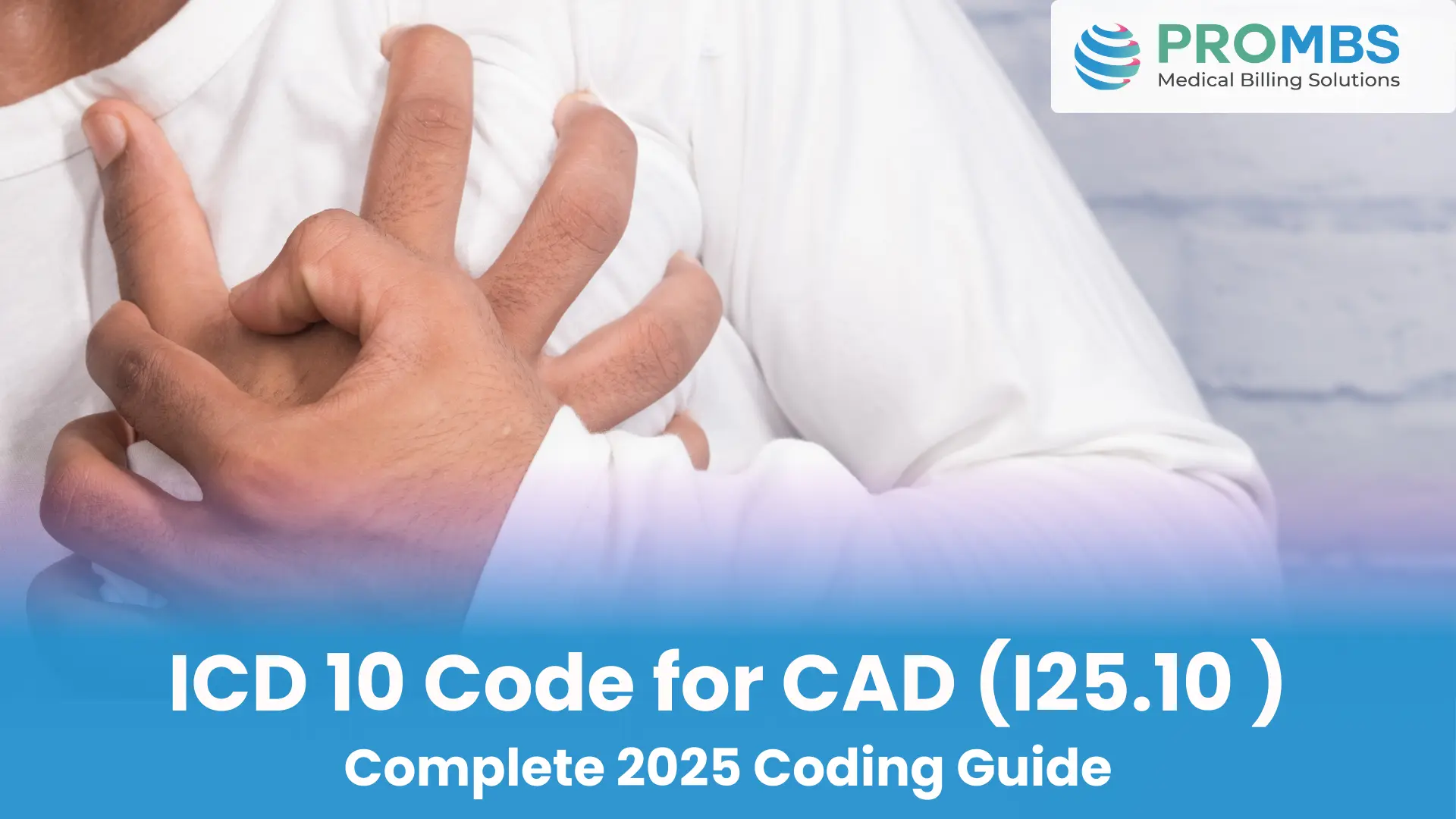Accurate diagnosis coding is essential for behavioral health conditions like ADHD, especially when it comes to reimbursement, audits, and treatment coordination. At the heart of this process is effective clinical documentation, backed by reliable medical billing and coding services. Whether you’re a clinician, practice manager, or healthcare administrator, understanding how to link the right diagnosis to the correct ICD-10-CM diagnosis code helps ensure clean claims and proper payment.
In this guide, we’ll break down the core ADHD subtypes, explain how each maps to a specific ICD-10-CM code, and clarify when to use ICD-10-CM Diagnosis Code F90.0, F90.1, F90.2, or F90.9 based on documentation. If you're involved in behavioral health billing or want to improve ADHD-related coding accuracy, this guide is built for you.
What Is ADHD and Why Coding Accuracy Matters
Attention-Deficit/Hyperactivity Disorder (ADHD) is a neurodevelopmental condition characterized by persistent inattention, hyperactivity, and impulsivity that interferes with functioning or development. Although typically diagnosed in childhood, ADHD frequently continues into adolescence and adulthood.
From a billing and compliance perspective, precise ICD-10 coding for ADHD is critical. Using the correct diagnosis code ensures appropriate reimbursement, supports continuity of care, and protects against payer denials or post-payment audits. Understanding the distinctions among ADHD subtypes and their ICD-10-CM diagnosis codes ensures your documentation meets both clinical and payer expectations.
ADHD, Inattentive Type | ICD-10-CM Diagnosis Code F90.0
When a patient primarily exhibits inattention such as trouble sustaining focus, frequent careless mistakes, seeming not to listen, forgetfulness, or disorganization without notable hyperactivity, the diagnosis is ADHD, predominantly inattentive presentation. The correct code is F90.0.
This subtype is often seen in academic settings where the child appears withdrawn or "daydreamy" rather than disruptive. It’s essential that the provider clearly documents the clinical features consistent with DSM-5 criteria for the inattentive type.
ADHD, Hyperactive-Impulsive Type | ICD-10-CM Diagnosis Code: F90.1
If the primary symptoms include fidgeting, inability to stay seated, excessive talking, blurting out answers, or acting without thinking but with minimal inattention, the appropriate diagnosis is ADHD, predominantly hyperactive-impulsive presentation. The correct code is F90.1.
This subtype is less common on its own but may appear in younger children who have not yet developed noticeable attention issues. Accurate documentation of hyperactive and impulsive behaviors is critical when assigning this code.
ADHD, Combined Type | ICD-10-CM Diagnosis Code: F90.2
When both inattentive and hyperactive-impulsive symptoms are present and clinically significant, the diagnosis is ADHD, combined presentation. This is the most common subtype and is coded as F90.2.
F90.2 should be used when symptoms meet DSM-5 criteria in both categories and are documented as impairing across multiple settings such as home and school. This code often supports multi-pronged treatment plans including behavioral therapy, academic accommodations, and pharmacologic management.
ADHD, Unspecified Type | ICD-10-CM Diagnosis Code: F90.9
If a patient is diagnosed with ADHD but the provider does not specify which subtype applies or if insufficient information is available to differentiate, the diagnosis is ADHD, unspecified type. The correct code is F90.9.
This code is commonly used during initial evaluations, early consults, or when documentation is limited. However, it is not ideal for long-term billing or care planning as it lacks specificity. Overuse of F90.9 may trigger payer inquiries or delay authorizations.
Clinical Scenario Example
Scenario: A 9-year-old male presents with reports from both parents and teachers describing poor focus, frequent careless mistakes, difficulty completing assignments, and forgetting instructions. He does not display fidgeting or disruptive behaviors.
Appropriate code: F90.0 (Inattentive type)
Services likely tied to this code: Academic assessment, executive function coaching, non-stimulant medications
DSM-5 Criteria Summary for ADHD Subtypes
| Subtype | Key Symptoms | ICD-10 Code |
|---|---|---|
| Inattentive | Disorganization, distractibility, forgetfulness, avoids tasks needing sustained focus | F90.0 |
| Hyperactive-Impulsive | Fidgeting, excessive talking, impulsivity, blurting, inability to stay seated | F90.1 |
| Combined | Symptoms from both categories persistently present | F90.2 |
| Unspecified | Diagnosis made but criteria or documentation is unclear or incomplete | F90.9 |
Why ADHD Subtype Coding Matters
The code you use impacts eligibility for:
- Prior authorization for medications or services
- Referral approvals
- Coverage of school-based assessments or therapy
For example:
- F90.0 may support interventions focused on attention and executive function
- F90.2 may justify behavioral therapy and medication adjustments
- F90.9 may not be sufficient for coverage without follow-up documentation
Precise coding ensures medical necessity is clear to payers and supports integrated care across school, behavioral health, and primary care teams.
Documentation Tips for ADHD Diagnosis Coding
To ensure accuracy and payer compliance, providers should:
- Specify whether DSM-5 criteria were met
- Document behavior patterns, onset, and duration
- Describe functional impact at school, home, or work
- Reference tools used such as the Vanderbilt or Conners scales
- Indicate the subtype explicitly based on findings
Common Errors in ADHD Coding
Avoid these common missteps:
- Using F90.9 as a default code without subtype clarification
- Assigning F90.0 or F90.2 without meeting DSM-5 diagnostic thresholds
- Failing to update the diagnosis after follow-up or complete evaluation
- Billing services like therapy or medication management without a code that supports medical necessity
Each of these can result in claim denials, payer audits, or delays in care delivery.
Aligning Diagnosis with Billed Services
Accurate coding must be paired with CPT codes that match the documented diagnosis. Examples:
- F90.0 + 96127 (Brief emotional/behavioral assessment)
- F90.2 + 90834 (Psychotherapy) or 99214 (Office visit with medication adjustment)
- F90.1 + 96130 (Neurobehavioral testing initial hour)
Without this alignment, payers may reject claims or request additional documentation. Clean claims depend on coding integrity.
Final Thoughts
ICD-10-CM diagnosis codes for ADHD (F90.0, F90.1, F90.2, and F90.9) are more than billing labels. They represent specific clinical subtypes that guide treatment, influence reimbursement, and support continuity of care.
Whether you're coding for inattentive ADHD (F90.0), hyperactive-impulsive type (F90.1), the combined type (F90.2), or using the unspecified code (F90.9) during evaluation, your documentation must be detailed, accurate, and aligned with DSM-5 criteria.
If your team is unsure about ADHD coding accuracy or experiencing denials in behavioral health claims, PROMBS is here to help. Our specialists ensure your claims are correctly coded, fully supported, and optimized for reimbursement.



